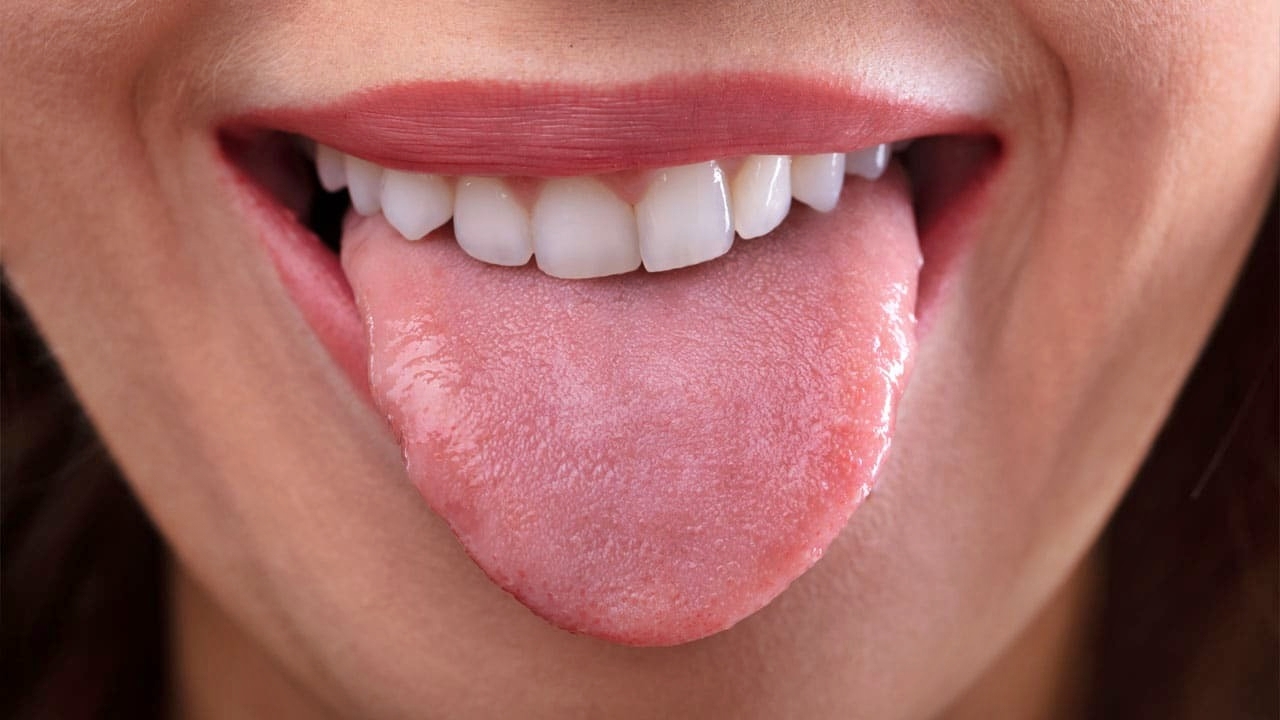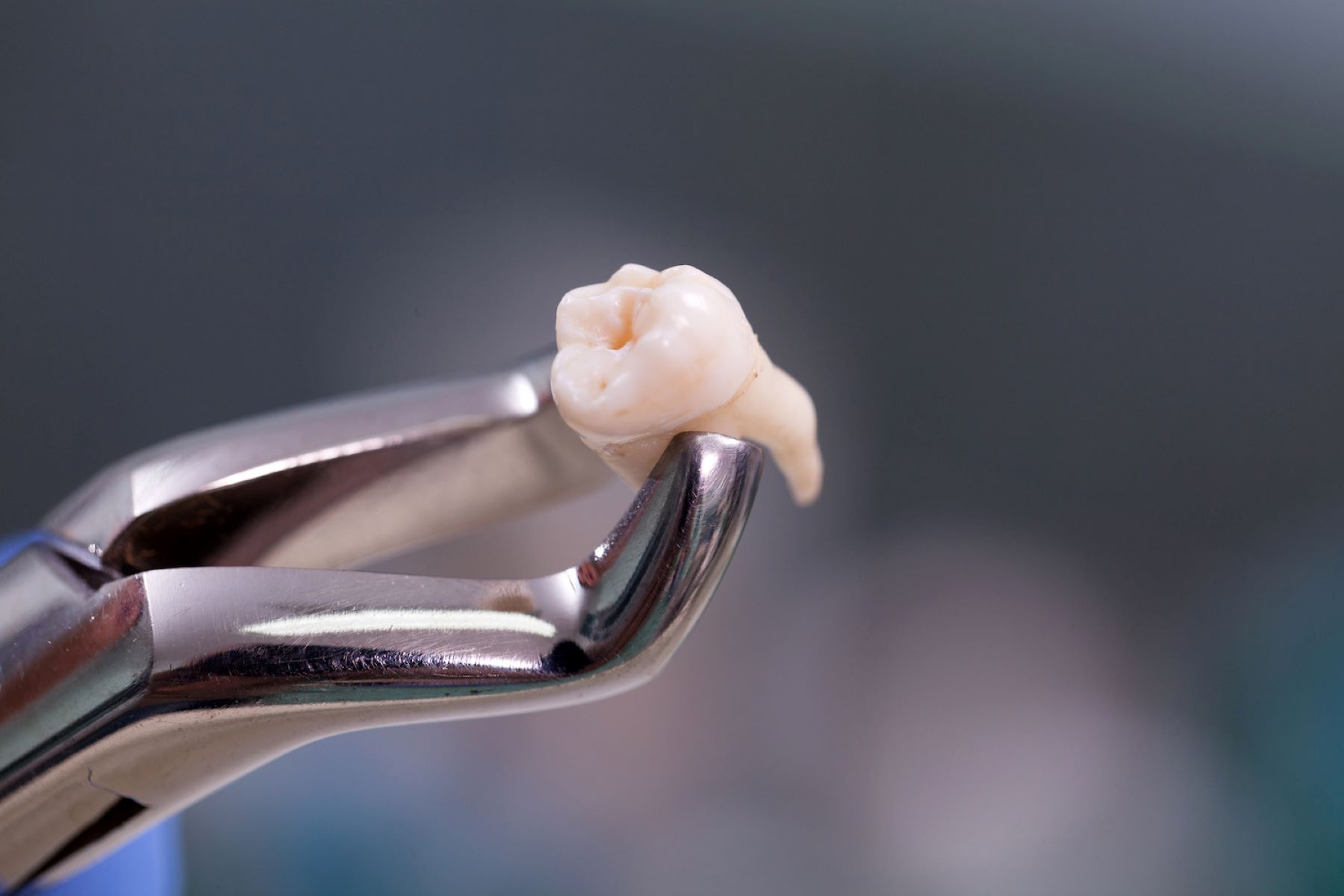Home>Misc>Featured>What Does Your Tongue Say About Your Health


Featured
What Does Your Tongue Say About Your Health
Published: September 8, 2023
Discover what your tongue reveals about your overall health with our featured article. Find out how to interpret colors, textures, and coatings on your tongue.
Introduction
Have you ever looked at your tongue and wondered what it might be telling you about your health? Believe it or not, your tongue can reveal a lot more than just taste buds. In fact, it can serve as a valuable tool in assessing your overall well-being. From the color to the texture, subtle changes in your tongue can indicate potential health issues that need attention.
The tongue is a fascinating organ that plays a crucial role in various functions, including speech, chewing, and tasting. It is made up of muscles covered by a mucous membrane, with tiny papillae that contain taste buds. These taste buds help us distinguish different flavors and ensure our gustatory satisfaction.
But did you know that the appearance of your tongue can provide insights into your internal health? The color, coating, and other changes on the surface of your tongue can indicate various underlying conditions.
In this article, we will explore the different aspects of your tongue and what they might reveal about your health. From white coating to redness, from bumps to a black, hairy appearance, we will delve into the possible meanings behind these variations. So, let’s dive into the world of tongue diagnosis and discover what your tongue might be saying about your overall well-being.
Tongue Anatomy
Before we embark on understanding the various changes in the tongue, let’s get acquainted with its anatomy. The tongue is a muscular organ located in the oral cavity and is a vital part of the digestive and speech processes.
The tongue is primarily composed of muscles and covered with a mucous membrane. It is attached to the floor of the mouth by a thin band of tissue called the lingual frenulum. The upper surface of the tongue has several small, raised bumps known as papillae. These papillae contain taste buds, which are responsible for detecting different tastes like sweet, sour, bitter, and salty.
The tongue is divided into different parts, each serving a specific function. The tip of the tongue is the most sensitive part and helps in precise movements such as tasting and speaking. The sides of the tongue assist in chewing and speaking, while the back of the tongue aids in swallowing and pushing food towards the throat.
It is interesting to note that the tongue is not just a taste organ. It also acts as a mirror to your overall health. Any changes in the appearance or texture of the tongue can provide clues about your well-being and point towards potential health issues.
Now that we have a basic understanding of the anatomy of the tongue, let’s explore different aspects of its appearance and what they might indicate about your health.
Tongue Color and Health
One of the key indicators of your overall health is the color of your tongue. The normal color of a healthy tongue is pink, indicating good blood flow and a healthy balance of microorganisms in the mouth.
However, changes in tongue color can be a sign of underlying health conditions. Let’s explore some of the common tongue color changes and what they might suggest:
- White Tongue: A white coating or patches on the tongue can indicate a buildup of dead cells, bacteria, or fungi. It may be a sign of oral thrush, a fungal infection, or a condition known as leukoplakia, which can be a precancerous condition.
- Yellow Tongue: A yellow coating on the tongue may be a sign of an oral infection, such as oral thrush or oral herpes. It can also indicate a digestive disorder or liver problem.
- Red Tongue: A bright red tongue can indicate a deficiency in essential vitamins and minerals, such as vitamin B12 or iron. It can also be a sign of a fungal or bacterial infection or an allergic reaction to certain medications.
- Black Hairy Tongue: This condition is characterized by a black, hairy appearance on the tongue’s surface. It occurs when the papillae become overgrown and trap bacteria, causing discoloration. Poor oral hygiene, smoking, certain medications, and excessive use of mouthwashes can contribute to this condition.
- Geographic Tongue: A tongue with irregular patches that resemble a map is known as a geographic tongue. It is a harmless condition but can cause discomfort or sensitivity to certain foods.
- Smooth and Glossy Tongue: If your tongue appears smooth and glossy, it may indicate a deficiency in iron, vitamin B12, or folate. This condition is known as glossitis.
It is important to note that changes in tongue color alone may not provide a definitive diagnosis. If you notice persistent changes in tongue color or accompanying symptoms, it is advisable to seek medical advice for further evaluation and proper diagnosis.
Now that we have explored the different colors of the tongue and their potential implications, let’s dive deeper into specific conditions associated with those colors.
White Coating on the Tongue
A white coating on the tongue is a common condition that can occur due to various reasons. It is often a result of an accumulation of dead cells, bacteria, or fungi on the surface of the tongue. While a thin white coating is considered normal, a thicker coating can indicate an underlying issue.
One common cause of a white coating on the tongue is oral thrush, a fungal infection caused by Candida yeast. This condition can occur due to a weakened immune system, poor oral hygiene, or the use of antibiotics that disrupt the natural balance of bacteria in the mouth. The white patches may appear cottage cheese-like in texture and can be easily scraped off.
Another condition that may cause a white coating on the tongue is leukoplakia. This is characterized by the formation of thick, white patches that cannot be scraped off. Leukoplakia can be a precancerous condition, so it is important to seek medical attention if you notice persistent white patches on your tongue.
Other factors that can contribute to a white coating on the tongue include smoking, dry mouth, dehydration, oral lichen planus (an inflammatory condition), and certain medications. Additionally, poor oral hygiene, such as not cleaning the tongue properly, can result in a buildup of dead cells and bacteria, leading to a white coating.
To alleviate a white coating on the tongue, it is important to maintain good oral hygiene practices. This includes brushing your teeth and tongue twice a day, using an antibacterial mouthwash, and regularly cleaning your tongue with a tongue scraper or soft toothbrush. Drinking plenty of water and avoiding smoking can also help reduce the coating.
If the white coating on your tongue persists or is accompanied by other symptoms such as pain or difficulty in swallowing, it is advisable to consult a healthcare professional for a proper diagnosis and treatment.
Now that we have covered the topic of white coating on the tongue, let’s explore the next potential concern: yellow coating on the tongue.
Yellow Coating on the Tongue
A yellow coating on the tongue can be indicative of various underlying factors. While a thin yellow coating is usually harmless and temporary, a thicker coating may warrant further attention.
One common cause of a yellow coating on the tongue is an oral infection, such as oral thrush. This fungal infection can lead to the formation of yellow patches on the tongue’s surface. It often occurs when there is an imbalance in the naturally occurring bacteria and fungi in the mouth.
Another possible cause of a yellow coating on the tongue is poor oral hygiene. When food particles and bacteria accumulate on the tongue’s surface, it can result in discoloration. Tongue cleaning techniques, such as brushing or scraping, can help remove these deposits and reduce the yellow coating.
In some cases, a yellow tongue coating may be associated with certain digestive disorders. These conditions can affect the liver or gallbladder, leading to a buildup of toxins in the body. This can manifest as a yellow discoloration on the tongue.
If you notice a persistent yellow coating on your tongue, it is important to address the underlying cause. Improving oral hygiene practices, such as regular tongue cleaning, can help reduce the discoloration. Additionally, maintaining a healthy diet, staying hydrated, and avoiding smoking or excessive alcohol consumption can contribute to a healthier tongue.
It is important to note that a yellow coating on the tongue may sometimes be a symptom of a more serious condition, such as jaundice or liver disease. If the yellow coating persists, spreads, or is accompanied by other symptoms like yellowing of the eyes or skin, it is advisable to consult a healthcare professional for a thorough evaluation and appropriate treatment.
Now that we have covered the topic of yellow coating on the tongue, let’s explore the next potential concern: a red tongue.
Red Tongue
A red tongue can be an indication of various underlying factors and may warrant further investigation. While a normal tongue can have a slight pink hue, persistent redness or a bright red color may be a cause for concern.
One possible cause of a red tongue is a deficiency in essential vitamins and minerals. A lack of vitamin B12, iron, or folate can lead to a condition known as glossitis, where the tongue becomes inflamed and appears red. This deficiency can have multiple causes, including poor dietary intake, malabsorption issues, or certain medical conditions.
A red tongue may also be a sign of a fungal or bacterial infection. Candida or yeast infections can cause redness and inflammation on the tongue’s surface. Similarly, bacterial infections, such as strep throat, can result in a red and swollen tongue.
In some cases, a red tongue can be a result of an allergic reaction to certain medications. Some medications can cause a condition known as oral lichenoid reaction, where the tongue becomes red, swollen, and may develop white patches.
Another potential cause of a red tongue is geographic tongue. This condition is characterized by irregular, red patches on the tongue’s surface, which may change in shape and location over time. While the exact cause of geographic tongue is unknown, it is generally considered to be a harmless condition.
If you have a persistently red tongue or experience additional symptoms such as pain, burning sensation, or difficulty in swallowing, it is advisable to seek medical advice. A healthcare professional can conduct a thorough examination, consider your medical history, and perform necessary tests to determine the underlying cause and recommend appropriate treatment.
In the next section, we will discuss a unique condition known as black hairy tongue, which can also affect the appearance of the tongue.
Black Hairy Tongue
Black hairy tongue is a condition that can affect the appearance of the tongue, giving it a black, hairy or fuzzy appearance. Despite its alarming name, it is usually harmless and temporary.
Black hairy tongue occurs when the papillae, the small bumps on the tongue’s surface, become elongated and trap bacteria or other debris. This can cause the tongue’s surface to appear dark or black. The condition is more common in individuals who have poor oral hygiene, smoke, or consume certain substances such as coffee or tea.
The accumulation of bacteria, yeast, or food particles on the elongated papillae can lead to the discoloration. In addition to the black color, individuals may also experience a sensation of a hairy or furry texture on their tongue.
Good oral hygiene practices play a crucial role in managing and preventing black hairy tongue. Regular tongue cleaning, using a tongue scraper or soft toothbrush, can help remove the buildup of bacteria and debris. It is also important to maintain good overall oral hygiene, including brushing your teeth twice daily with a soft toothbrush and using an antibacterial mouthwash.
In most cases, practicing good oral hygiene and avoiding contributing factors such as smoking or excessive consumption of staining substances can help resolve black hairy tongue. However, if the condition persists or is accompanied by other symptoms such as pain, discomfort, or difficulty in eating or speaking, it is advisable to seek medical advice.
It is worth noting that while black hairy tongue may be a visually concerning condition, it is rarely a serious health issue. However, if the discoloration persists, worsens, or if you have any concerns, a healthcare professional can provide appropriate guidance and treatment options.
Next, we will explore a unique condition known as geographic tongue and its implications for oral health.
Geographic Tongue
Geographic tongue, also known as migratory glossitis, is a relatively common and benign condition that affects the appearance of the tongue. It gets its name from the irregular, map-like pattern that can develop on the surface of the tongue.
The exact cause of geographic tongue is unknown, but it is believed to be related to a combination of genetic and environmental factors. It is more common in individuals with a family history of the condition. Geographic tongue is not contagious and does not typically cause any discomfort or health complications.
The defining characteristic of geographic tongue is the appearance of irregular, smooth, and slightly raised patches on the surface of the tongue. These patches can vary in size, shape, and color, ranging from red to white or yellow. The patches may change in location or size over time, giving the tongue a constantly shifting map-like appearance.
While geographic tongue is generally a harmless condition, it can cause some sensitivity or discomfort, particularly when consuming spicy or acidic foods. In some cases, individuals with geographic tongue may also experience a burning sensation on the tongue.
There is no specific treatment for geographic tongue since it is considered a benign condition. However, individuals may find relief by practicing good oral hygiene, including regular brushing of the tongue and using a mild mouthwash. Avoiding irritating or spicy foods can also help alleviate any discomfort or sensitivity.
If you have concerns about the appearance or symptoms of your tongue, it is always recommended to consult with a healthcare professional. They can provide a proper diagnosis and offer guidance on managing any discomfort or symptoms associated with geographic tongue.
Now that we have explored geographic tongue, let’s move on to discussing the significance of a smooth and glossy tongue.
Smooth and Glossy Tongue
A smooth and glossy tongue, also known as atrophic glossitis, is a condition characterized by a lack of the normal bumps, known as papillae, on the tongue’s surface. This can give the tongue a shiny, slick appearance.
Several factors can contribute to a smooth and glossy tongue. One common cause is a deficiency in essential vitamins and minerals, particularly vitamin B12, iron, and folate. These nutrients play a critical role in maintaining the health of the tongue’s papillae. Without an adequate supply, the papillae may shrink or disappear, resulting in a smooth appearance.
Other potential causes of a smooth and glossy tongue include certain medical conditions such as anemia, oral lichen planus, or burning mouth syndrome. In some cases, this condition may be a side effect of certain medications or the result of chronic irritation or inflammation of the tongue.
Having a smooth and glossy tongue can be uncomfortable, as it may increase sensitivity to spicy, acidic, or hot foods. Additionally, it can contribute to difficulties in speaking and swallowing.
If you notice a smooth and glossy appearance of your tongue, it is important to consult with a healthcare professional for proper diagnosis and treatment. They may conduct blood tests to assess your nutrient levels or other tests to identify any underlying medical conditions.
Treatment for a smooth and glossy tongue typically involves addressing the underlying cause. For example, if it is due to a nutrient deficiency, supplements or dietary changes may be recommended. In cases where an underlying medical condition is present, appropriate treatment plans will target that particular condition.
In the next section, we will discuss another common concern related to the tongue: painful tongue bumps.
Painful Tongue Bumps
Experiencing painful bumps on the tongue can be quite uncomfortable and concerning. These bumps can vary in size, appearance, and location, and their presence may indicate an underlying issue.
One common cause of painful tongue bumps is canker sores, also known as aphthous ulcers. Canker sores are small shallow lesions that can develop on the tongue or other areas inside the mouth. They are typically round or oval-shaped with a white or yellowish center and a red border. Canker sores can be triggered by factors such as stress, certain foods, or trauma to the mouth.
Another possible cause of painful tongue bumps is oral herpes. This viral infection can cause the formation of small, painful blisters on the tongue or other parts of the mouth. These blisters may break, releasing clear fluid and eventually crusting over. Oral herpes is usually transmitted through direct contact with an infected individual.
Other conditions that can lead to painful bumps on the tongue include oral thrush, a fungal infection characterized by white patches that can cause discomfort. Additionally, inflamed taste buds, also known as transient lingual papillitis or “lie bumps,” can appear as painful red or white bumps on the tongue. These bumps can occur due to irritation, sensitivity to certain foods, stress, or hormonal changes.
If you have painful bumps on your tongue that persist for more than two weeks or are accompanied by other concerning symptoms like fever, difficulty swallowing, or severe pain, it is essential to seek medical attention for a proper diagnosis.
The treatment for painful tongue bumps depends on the underlying cause. Over-the-counter topical medications, oral rinses, or pain relievers can provide relief for canker sores or inflamed taste buds. Antiviral medications may be prescribed for oral herpes. Addressing potential triggers, maintaining good oral hygiene, and avoiding irritating substances can also help prevent and manage painful tongue bumps.
Now that we have covered the topic of painful tongue bumps, let’s summarize the main points we have discussed so far.
Summary
The appearance of your tongue can provide valuable insights into your overall health. From its color to the presence of coating, bumps, or changes in texture, your tongue can be a window into potential health issues.
We explored the different colors that the tongue can exhibit, including white, yellow, red, and even black. Each color change can indicate various underlying factors, such as oral thrush, nutritional deficiencies, infections, or allergic reactions.
We also discussed specific conditions that can affect the appearance of the tongue, including black hairy tongue, geographic tongue, and atrophic glossitis. Understanding these conditions and their implications can help you recognize and address any concerns about your tongue’s health.
Furthermore, we examined the presence of painful bumps on the tongue, which can be caused by canker sores, oral herpes, oral thrush, or inflamed taste buds. Identifying the cause of these bumps can guide appropriate treatment and provide relief from discomfort.
Remember that while changes in the appearance or texture of your tongue can be indicators of potential health issues, it is important to consult with a healthcare professional for a proper diagnosis and treatment plan. They can perform a thorough evaluation, consider your medical history, and conduct any necessary tests to determine the underlying cause.
Maintaining good oral hygiene, including regular brushing of the tongue, using a tongue scraper, and practicing overall healthy habits, can help prevent many tongue-related problems. In addition, adopting a balanced diet and staying hydrated contribute to the overall health of your tongue and oral cavity.
So, next time you look at your tongue, take a moment to examine its color, coating, and texture. It may hold valuable clues about your overall health. And remember, a healthy tongue is not only important for tasting food but also a reflection of your well-being.









